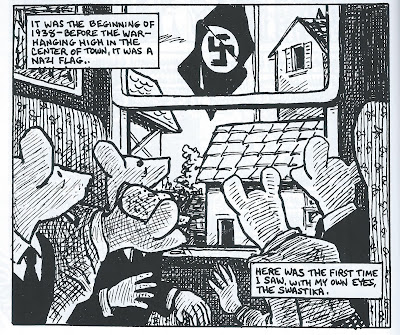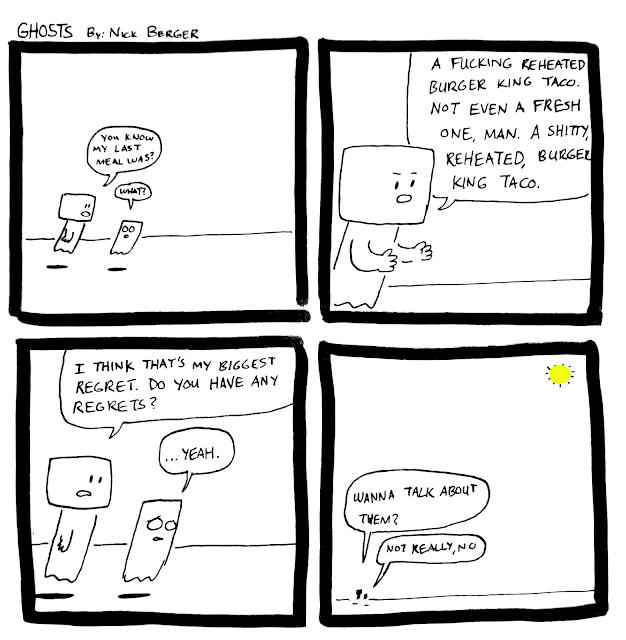Week 7- Maus
Art Spiegelman’s approach to telling his father’s story in Maus is fascinating. On paper, his decision to represent everyone with cartoon animals sounds terrible. In lesser hands, it could’ve turned the story into a farce, and yet it works wonders. Part of what makes it work is that the characters aren’t that cartoonish. Aside from their animal heads, the characters have realistic proportions and inhabit a realistic world. It all ties back to the idea of the icon and how it can make a reader empathize with a character easier. Also, it works as a perfect shorthand to show someone’s nationality/religion/affiliation without having to explain their full backstory. Spiegelman plays with this throughout the comic too. For example, in one scene where Vladek is pretending to be Polish, he is wearing a pig mask. Spiegelman also addresses the process of assigning everyone an animal when he is deciding what animal he should draw his wife as. Since she is French, he considers not drawing her a mouse. However, she converted to Judaism, and he wants to figure out how to show that. In the book, she is drawn as a mouse. It’s a bold choice that raises a lot of ideas. I can easily see the argument that doing this turns the story into an “us vs. them,” type scenario, but in the case of World War II that’s somewhat fair. In a way, it reclaims the Nazis’ view of everyone being different (obviously that’s underplaying it) and turns it into a more positive idea. Seeing the Jewish mice interact with different animals makes the world seem bigger and more diverse.
Most of his characters, especially the mice, emote with their eyes and eyebrows. While not overly expressive, this gets the job done and makes you focus more on the events that are happening. This works well for Maus specifically since it is closer to a documentary or biopic than a traditional story. However, this also helps accentuate moments when they are more expressive. This tends to also be shown in the eyes; when a character is reacting to something terrible, their eyes will (sometimes) turn from just black dots to sketchy circles with pupils in them. It’s interesting how such a simple change can show so much emotion in a character.




Comments
Post a Comment